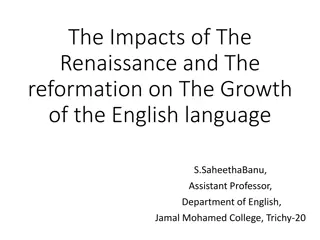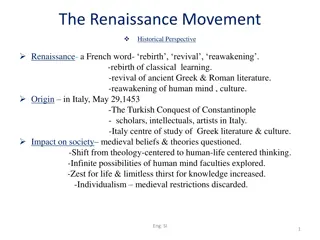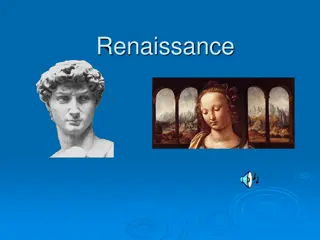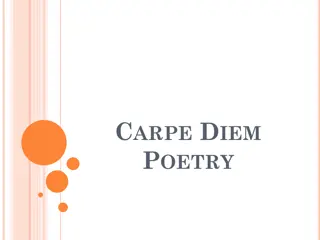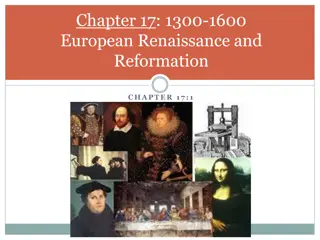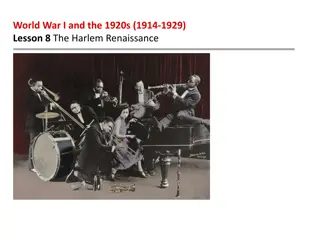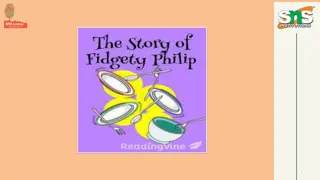Sir Philip Sidney: The Ideal Renaissance Gentleman
Sir Philip Sidney (1554-1586) exemplified the perfect courtier and universal gentleman of the English Renaissance. His life as a poet, courtier, diplomat, and soldier was marked by romantic disappointments, political involvement, and literary contributions such as "Arcadia," "Astrophel and Stella," and "Apology for Poetry." Sidney's poetic works expressed themes of love, passion, and enduring freedom. His ethos of seeking nobility and eternal love shines through his writings despite his tragic end in battle at Zutphen in 1586.
Download Presentation

Please find below an Image/Link to download the presentation.
The content on the website is provided AS IS for your information and personal use only. It may not be sold, licensed, or shared on other websites without obtaining consent from the author.If you encounter any issues during the download, it is possible that the publisher has removed the file from their server.
You are allowed to download the files provided on this website for personal or commercial use, subject to the condition that they are used lawfully. All files are the property of their respective owners.
The content on the website is provided AS IS for your information and personal use only. It may not be sold, licensed, or shared on other websites without obtaining consent from the author.
E N D
Presentation Transcript
1. LIFE The English poet, courtier, diplomat, and soldier Sir Philip Sidney (1554-1586) realized more dramatically than any other figure of the English Renaissance the ideal of the perfect courtier and the universal gentleman. 2. Father, Sir Henry Sidney, Lord Deputy of Ireland, and mother, Mary Dudley Sidney, sister of the Earl of Leicester. 3. Grammar school---College---Tour in Europe.
4. disappointed because of his admiration of Penelope Devereux, the daughter of the Earl of Essex, who clearly inspired the "Stella" of his sonnet sequence. But she married Lord Rich in 1581. Two years later Sidney married the daughter of Sir Francis Walshingham. He was knighted the same year. 5. He had been a leader of the strong Puritan faction promoting English involvement in the wars of the Protestant Dutch against their Spanish rulers. 6. At the battle of Zutphen on Sept. 22, 1586, he was fatally wounded.
Major Works 1. Arcadia, a work tradition, the heroic epic, and the romances of chivalry. Combining elements drawn from the pastoral 2. Astrophel and Stella, expressing varying moods and intensities of passionate love, in imitation of Italian and French sonneteers of the Petrarchan tradition. 3. Apology for Poetry, was the first major critical essay in Renaissance England.
LEAVE ME O LOVE Leave me, O love which reachest but to dust ; And thou, my mind, aspire to higher things ; Grow rich in that which never taketh rust, Whatever fades but fading pleasure brings.
Draw in thy beams, and humble all thy might To that sweet yoke where lasting freedoms be ; Which breaks the clouds and opens forth the light, That doth both shine and give us sight to see.
O take fast hold ; let that light be thy guide In this small course which birth draws out to death, And think how evil becometh him to slide, Who seeketh heav'n, and comes of heav'nly breath.
Then farewell, world ; thy uttermost I see ; Eternal Love, maintain thy life in me.
ANALYSIS TIPS 1. DIVINE LOVE. 2. APOSTROPHE. 3. CONTRAST. 4. ENGLISH SONNET RHYME SCHEME.



